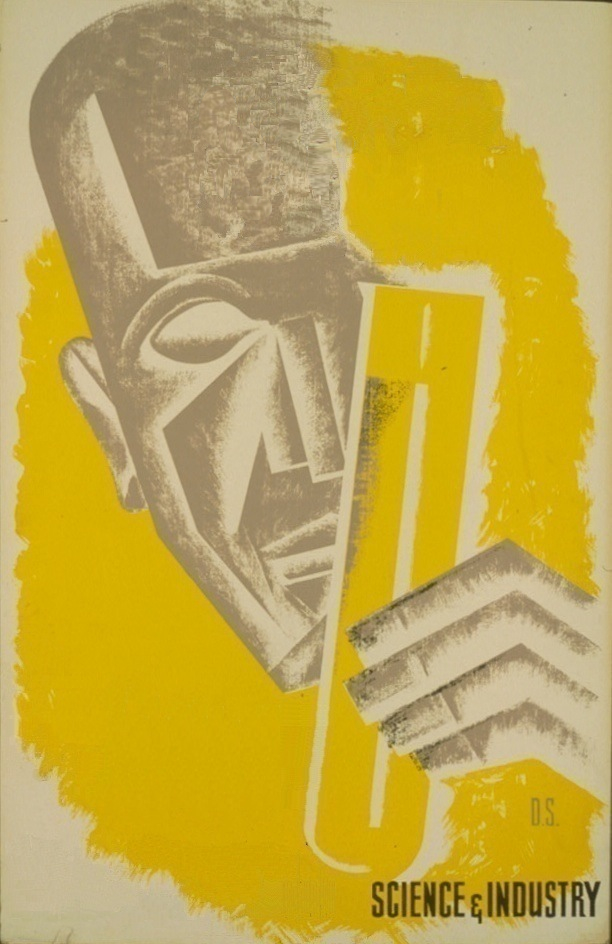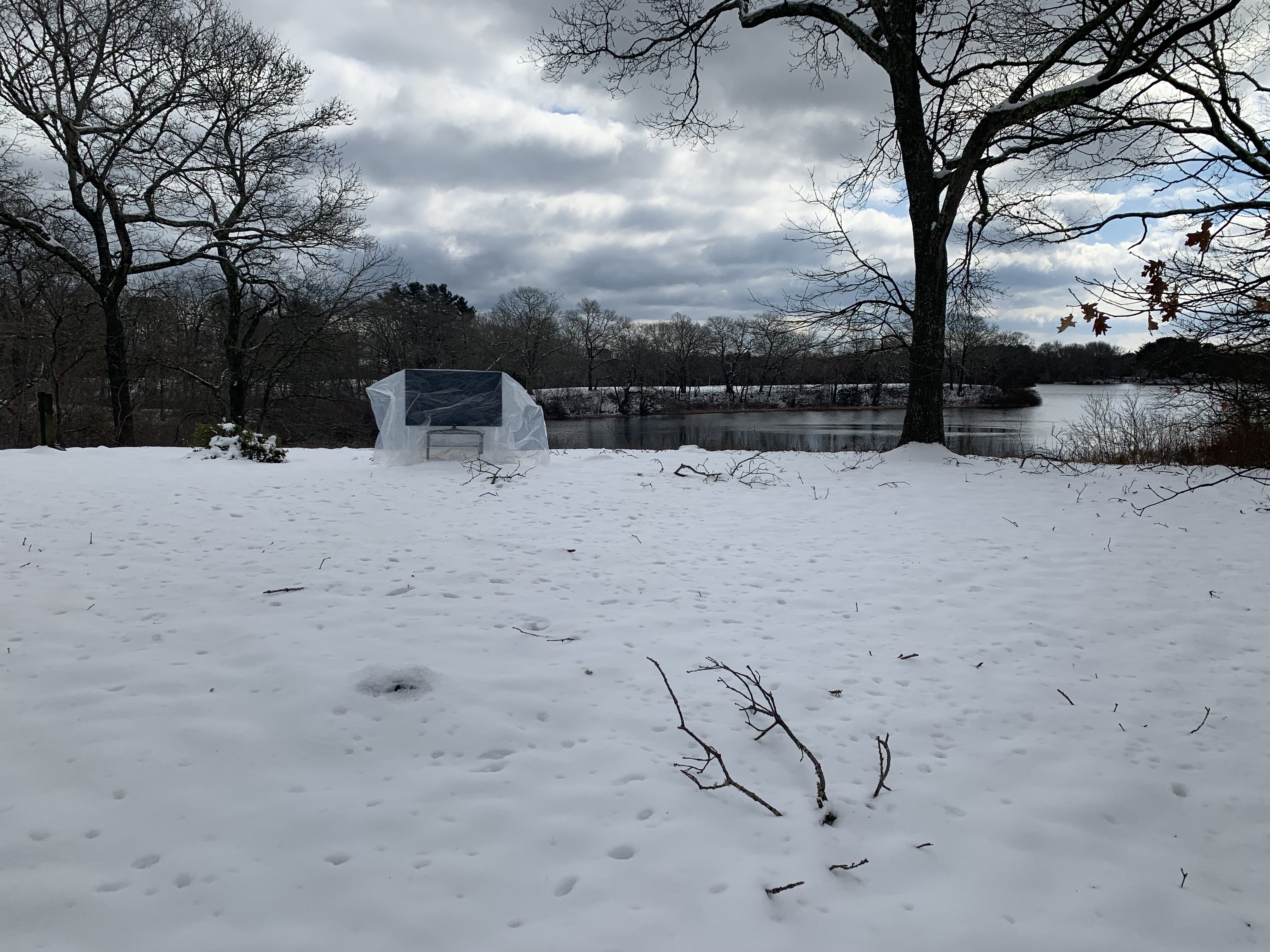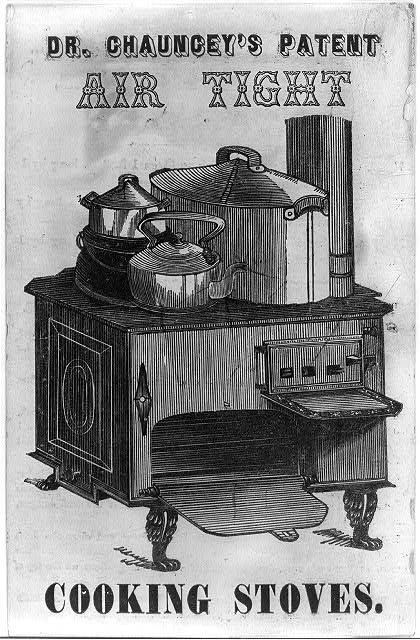FedCirBlog
IS DEAD
… … … … … … … … … … … … …
… … … … … « — » … … … … … …
… … … … … … … … … … … … …
… … … … … … … … … … … … …
… … … … … « — » … … … … … …
… … … … … … … … … … … … …
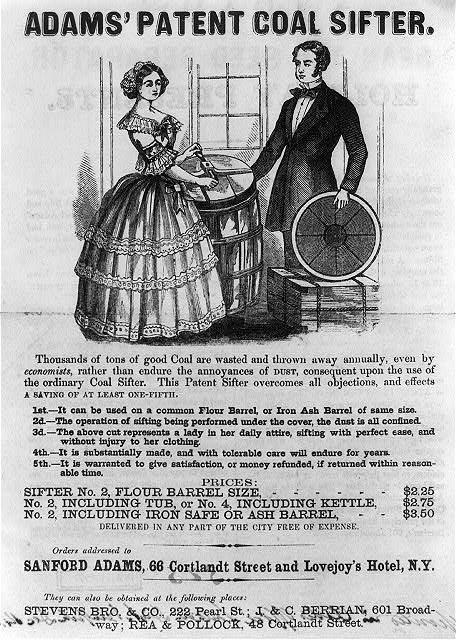
… … … … … … … … … … … … …
… … … … … « — » … … … … … …
… … … … … … … … … … … … …
old tidge.com blog
How weary, stale, flat, and unprofitable seem to me all the pages of this website!
Fie on't, ah fie, 'tis an unweeded garden that grows to seed; things rank and gross in nature possess it merely.
That it should come to this!?!?! More than a decade old--nay, not so much--a poor player, that strutted and fretted its hour upon the web, and now should be heard of no more: it was a site made by an idiot, full of sound and fury, signifying nothing.
Building a new one: re-learning the coding, PHP, SQL, etc. With weird shit, like Shakespearean mash-ups and whatever the hell these are:
Finally liberating my books from their long captivity after my exodus from Manhattan and am discovering many things, such as:
Found this while unpacking books - handwritten vocabulary flashcards for teaching myself hieroglyphs (while I was at a...
Posted by Tidge Holmberg on Friday, March 8, 2019
Note that's no Budge/Dover bullshit, but Gardiner's Egyptian Grammar. Nothing but the best for the perpetual dilettante.
We did read Book II of Herodotus at St. John's College, which is all about Egypt, which the ancient Greeks practically venerated, but St. John's was all about the Great Books (some of which the ancient Greeks apparently wrote). St. John's was more interested in Great Books than understanding history, context, or humanity. I used to say that St. John's taught us to worship Great Books, but not to recognize them. That's unfair to all of the insightful and always interesting graduates of St. John's; however, my focus was St. John's underlying myth of an immutable canon of Great Books, as if such "greatness" was not subject to the vagaries of the ever-changing fads, fetishes, and the fickleness of human judgment. Now that's an interesting conversation.
For the one person occasionally looking at this website (my deceased mother), I offer the following:
In re-learning website coding dynamics, I am finding this website is so out of date it'll be easier to build a new one.
These just tickle my fancy, mostly based on what I'm imagining they're about. You can find them on the Library of Congress website, prints and photographs collection, and reading the notes, you will find they are Japanese woodcuts, dated "between 1850 and 1900," donated by a Mrs. E. Crane Chadbourne to the Sackler Gallery of Art in 1930.
I imagine the prints to be part of the society-wide remaking of Japan before, during, and after the Meiji Restoration in 1868, when the Japanese "westernized" themselves with a vengeance. One of the prints has typewritten notes at the bottom, indicating that the "Department of Education" was somehow involved. These prints are the equivalent of medieval morality plays and Soviet posters from the 1920's; they are proselytizing pieces of propaganda, intending to teach the viewer how to think about things. They were trying to create a new ethos. An "innovation nation" perhaps? Yes, but the real thing, not the pro-"entrepeneurship" schlock that seems to ooze from every corner of the corporate media machine nowadays.
What I find funny is that all of these Western inventors/innovators seem to be beseiged or a little crazy in every woodcut: are we really supposed to emulate them?
James Watt,
Inventor of the Steam Engine
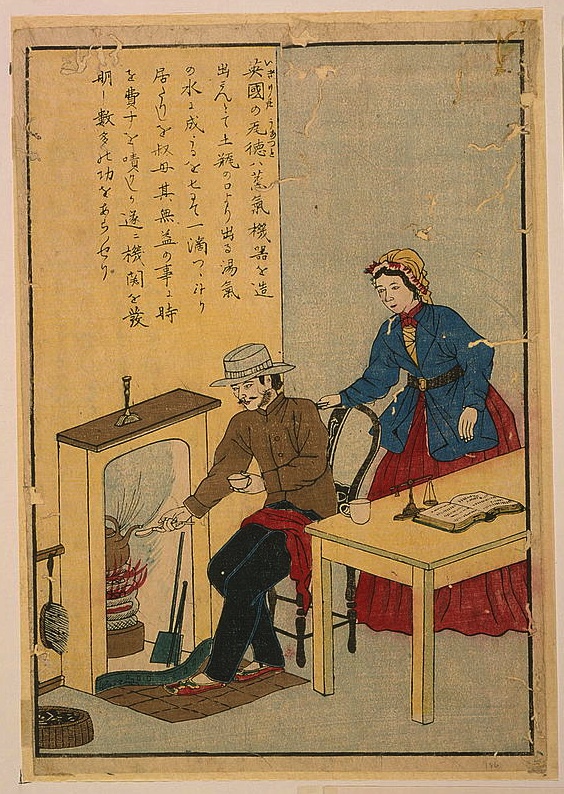
This is "James Watt, inventor of the steam engine, collect[ing] steam from a boiling kettle while his aunt rebukes him for his nonsense." Wha-a-a-at?!? I have no idea if this is based on any historical reality. See Watt's Wikipedia entry.
Bernard Palissy,
Inventor of Enamelled Pottery
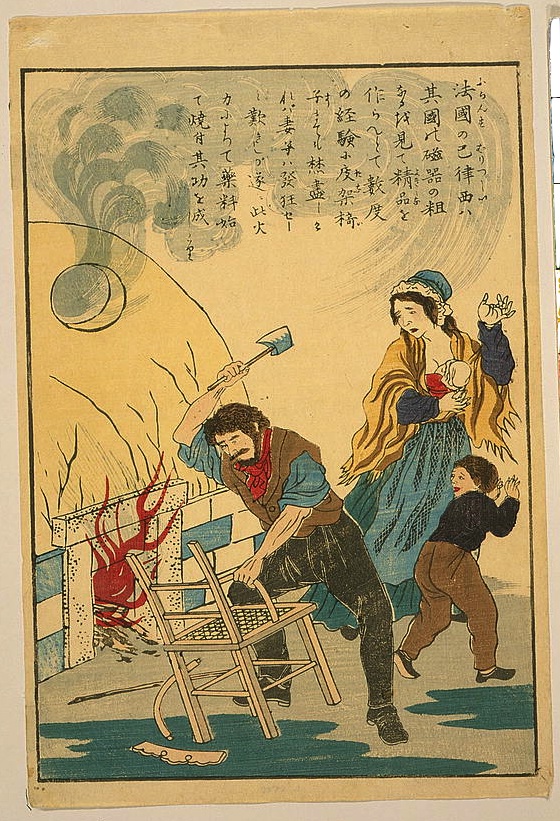
"Bernard Palissy, inventor of enamelled pottery, burns chairs to keep the furnace going" while his wife flees in terror and his child flees in good humor. True that. See Palissy's Wikipedia entry:
Richard Arkwright,
Inventor of Spinning Machiney
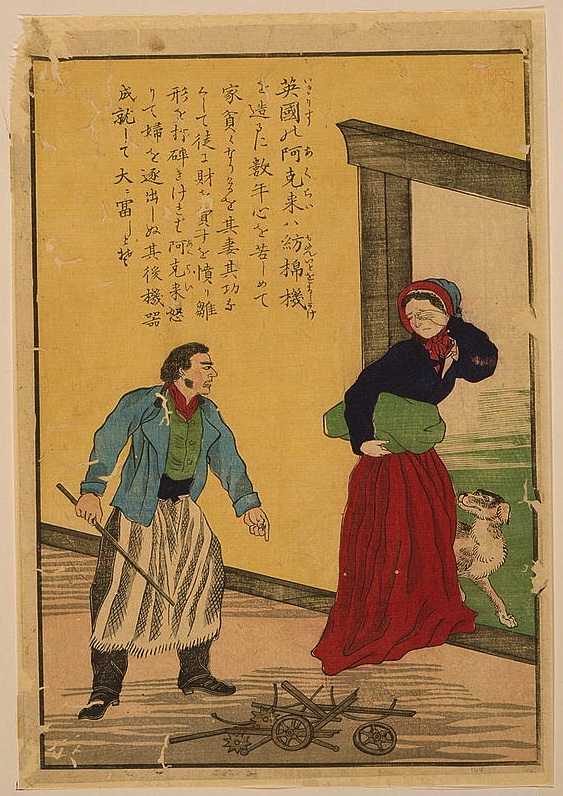
"Arkwright sending his wife to her parents because she deliberately broke his spinning wheel." But, why, honey, why?!?! No idea if this happened or not. See Arkwright's Wikipedia entry (with juicy patent fights!!).
Thomas Carlyle,
Author and Historian
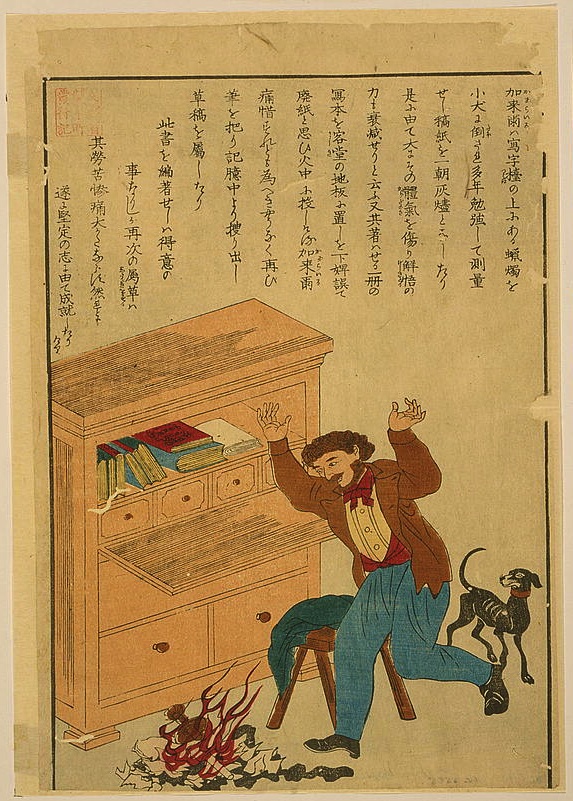
"Carlyle horrified to see his manuscript burn after his dog upsets a lamp." No idea if this happened or not. See Carlyle's Wikipedia entry.
John James Audubon,
Bird Naturalist
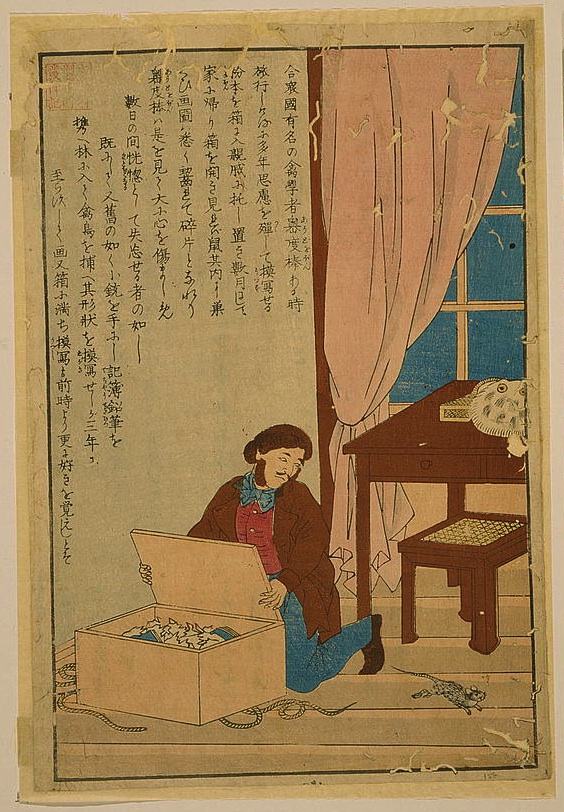
"Audubon discovering that his work was eaten by a rat." See Audubon's Wikipedia entry ("After his return to Kentucky, he found that rats had eaten his entire collection of more than 200 drawings").
John Heathcoat,
Inventor of the Knitting Machine

"Heathcote [sic] displaying the first successful result from his knitting machine to his wife." I admit she doesn't seem horrified, disgusted, or royally pissed off. But, on the other hand, he's the only guy on the list I'd never heard of, so fame may depend on adversity. See Heathcoat's Wikipedia entry
The Feds have vacated their previous decision CLS Bank Int'l v. Alice Corp. Pty. Ltd. (Fed. Cir. July 9, 2012), which was their first decision interpreting the Supremes' March 20, 2012 Mayo Collaborative Services v. Prometheus Laboratories, Inc., 566 U. S. ___ (2012)—the case where the Supremes clarified that patent claims "must add enough" to natural processes/natural laws in order to be patentable under §101 (subject matter), but failed to clarify how any other court can determine what is "enough." See, e.g., Right Result, Wrong Reason.
The lower court in the CLS Bank appeal had ruled that the computerized trading method, system, and media claims were invalid for failing to claim eligible subject matter. CLS Bank Int’l v. Alice Corp., 768 F. Supp. 2d 221 (D.D.C. 2011). In CLS Bank Int'l v. Alice Corp. Pty. Ltd. (Fed. Cir. July 9, 2012), the majority (Linn, author, and O'Malley) of the Federal Circuit 3-person panel reversed the trial court's ruling, holding "that the system, method, and media claims at issue are not drawn to mere 'abstract ideas' but rather are directed to practical applications of invention falling within the categories of patent eligible subject matter defined by 35 U.S.C. §101" (p. 2).
The third judge, Prost, dissented, stating not only that "the asserted patent claims are abstract ideas repackaged as methods and systems," but that the majority was effectively ignoring "the Supreme Court’s unanimous directive to apply the patentable subject matter test with more vigor" (referring to Mayo). CLS Bank Int'l, dissent, pp. 1, 2.
Today, the Feds' vacated the split CLS Bank decision, and requested the parties (and the PTO and anyone else who cares to) address the following questions:
b. In assessing patent eligibility under 35 U.S.C. § 101 of a computer-implemented invention, should it matter whether the invention is claimed as a method, system, or storage medium; and should such claims at times be considered equivalent for § 101 purposes?
Here's another question one might ask: does this have anything to do with yesterday's N.Y. Times article The Patent, Used as a Sword, making the argument (based, as usual, on anecdotes and one or two "expert" opinions) that the "software patent system ... is so flawed that it often stymies innovation." That article did refer to Judge Richard A. Posner's recent anti-patent decision (dismissing the N.D.Ill. Apple v. Samsung case), recent anti-patent article (Why There Are Too Many Patents in America - The Atlantic - July 12, 2012), and several personal email responses and a telephone interview from Judge Posner himself.
This follows up on a previous blog entry (Past a certain point, contracts are only words on paper) concerning a personal bugbear of mine: the assumption, by some attorneys, of the absolute power of the words of a contract. They aren't, they never were, and they never will be.
This is a pretty minor example, but I think a telling one. In Mitek Sys. v. United Services Automobile Assoc., D.Del. 12-cv-462 (2012-08-30) (Sleet, J.), the forum selection clause of the licensing agreement between the parties stated:
Judge Sleet held that the first-filed rule trumped the contract and ordered the case transferred to the Western District of Texas, where USAA had filed suit against Mitek two weeks before. Id., p. 5 (" ... the court will not enforce the Delaware forum selection clause of the License Agreement ... ").
What I find telling is that USAA didn't even focus on the public policy arguments for ignoring the forum selection clause—it appears the judge made those arguments pretty much by himself, while USAA instead argued that other agreements (with Texas forum selection clauses) superseded the contract with the Delaware forum selection clause. In other words, USAA's lawyers were so blinded by the clear wording of the contract with the Delaware forum selection clause (and their assumption that such words in a contract are absolute) that the only way they saw out of it was to argue other agreements must apply. Judge Sleet, knowing the law and possessing common sense, didn't waste his time:
...
[The court completely rejects] Mitek['s] argu[ment] that the presence of the [forum selection] clause defeats the ordinary application of the first-filed rule ...
...
No [exceptions] are presented here to justify a departure from the ordinary rule favoring the forum of the first-filed action.
Contracts are not absolute; they never were, and they never will be.
I've written before about what I believe to be a judicial (and academic) pushback against oversealing in patent litigations*, and now the Federal Circuit has stepped in and effectively reversed Judge Koh's efforts to keep judicial proceedings appropriately public. So it seems the Feds aren't part of that judicial pushback.
Yesterday, the Feds stayed Judge Koh's orders "unsealing certain trial and motion exhibits" (the Feds' 9/18/2012 Stay Order). The Feds did this without explanation: although they recited the correct law to apply, the Feds gave no indication how the law applied to the facts of this case, nor any indication why the law compelled the use of an extrajudicial remedy like an injunction to undo the rulings of the trial court judge.
The Feds similarly granted a stay without explanation (but with a recital of the applicable law) in Butamax Advanced Biofuels LLC v. Gevo, Inc. (order here). Because Butamax stayed the lower court's enjoining of the ongoing activities of a business, I could understand an argument that the merits were somehow "obvious" (and thus did not require an explanation), but there is no such possible justification regarding this order. Besides, not explaining how the law applies to the facts of the case is just bad form.
If the presentation in one of Gizmodo's article on the Apple v. Samsung case (article here) is indicative of the materials that Judge Koh ordered unsealed, the Feds are wrong on the facts and wrong on the law.
tidgenotes* - I originally wrote about judicial pushback against oversealing in Signed, SEALED, Delivered, I'm Yo--well, maybe not, followed by a post noting Gizmodo's use of unsealed materials in an article about Apple v. Samsung (Gizmodo proves me wrong), and then a nod to Prof. Bernard Chao's articles against the abuse of sealing in patent cases (Patently-O proves me wrong).
The title of this blog entry is from 1587: A Year of No Significance, a book which concentrated on a year where "nothing happened" in Chinese history—57 years before the fall of the Ming Dynasty, 1587 had no great battles, witnessed no great war, no foreign invasion threatened, no great disruption of civil service and civil government, the then-reigning Wanli Emperor (萬曆) (1563-1620), although "representative of Ming decline," was neither that good nor that bad.
So why bother writing about 1587? Because a true understanding of history requires an understanding of the seemingly unimportant interlinked events that fill the interstices between the "big" events. In an analogous (but only roughly similar) manner, I think a lawyer must be continually reading cases in order to maintain an understanding of the law, not merely how it is moving and developing, but also how one, as a lawyer, can best approach the problems encountered in one's own cases.
 *
*
ActiveVideo v. Verizon Comms. was a case of no significance (although the Feds did make it precedential), and I found the following interesting:
A Non-Victory
Victory
Wait, ... what? Verizon "won" a reversal (by getting the Feds to reverse the ruling of infringement of the '582 pat, one of the 4 ActiveVideo pats asserted against Verizon in the case), but this victory was worth nothing (i.e., had no effect on the $115M damage award against Verizon). Does this mean appellants should always break up the total damage award into the monetary values of each patent when arguing non-infringement on appeal? Maybe, maybe not, but I'm sure as hell going to think about it next time I'm appealing an adverse infringement ruling involving more than one patent. And what about at trial? Hmmmmm.
Win @ Trial,
or Lose
Some patent litigators have a habit of viewing all trial court rulings as "right" or "wrong," and assume that, if the ruling is "wrong," it will be corrected on appeal. This attitude is not merely incorrect, but indicative of someone who doesn't understand the law. The truth is, there are many rulings, particularly evidentiary rulings, that are close calls, and our system of law leaves these decisions to the trial court judge's discretion. I have encountered versions of the above phrase ("... we may not have decided ... the same way ...") in dozens of Fed.Cir. cases where the trial court judge's ruling was affirmed. The lesson is, regarding close calls, you win at trial, or you lose—there is no appeal.
No Need to Construe It All
Some patent litigators still believe that if their adversaries propose a claim construction, they must either agree with the proposed claim construction or propose their own. This is manifestly false, and gives your opponent a tactical advantage by allowing your opponent to force you into acquiescing (by agreeing to their construction) or fighting (by proposing your own), when completely unnecessary.
tidgenotes
* - The IT staff at tidge.com are mystified by the appearance of a late 1800's herring tin label in the middle of this blog entry. Go figure.
My first question (of many) concerning the Fed.Cir.'s August 16th Ass'n for Molecular Pathology v. PTO ("the Myriad decision"1) is whether the Feds went as far as the Supremes wanted them to. The Supremes themselves will answer this question when and if the Supremes grant cert (assuming somebody files a petition of certiorari, which seems inevitable). I think that the Supremes will grant cert (although I wouldn't bet on it, it's just a hunch)—i.e., I'm guessing that the Supremes wanted to go further than the Feds did.
To Be, or not To Be,
Patentable Subject Matter
Myriad concerns what is, and is not, patentable subject matter, or, to put it in the Feds' terminology, what is patent eligible.2
The Supremes vacated the Feds' previous Myriad decision (in which the Feds decided all of the claims at issue were patent eligible) and remanded the case back to the Feds "for further consideration in light of Mayo Collaborative Services v. Prometheus Laboratories, Inc.," 132 S. Ct. 1289 (2012)—a case in which the Supremes used some very broad language to rule that the method claims at issue were not patent eligible.
The 3 different types of claims at issue in the Myriad patents are:
- composition claims to isolated DNA molecule(s) (specifically, the BRCA1/2 genes);
- method claims for screening cancer drugs using cells whose BRCA1/2 genes have been altered to produce cancer;
- method claims for testing human DNA samples to see if the BRCA1/2 genes have been altered.
A competent patent attorney could use the language of the Mayo decision to make reasonable arguments that all 3 types of claims in Myriad are patent ineligible (and some did). However, in the Myriad decision last week, the Feds ruled that only the third type of claim, involving the testing of human DNA samples, was patent ineligible, whereas the other two types remained patent eligible (i.e., for the first two types, the Feds ruled the same as before). In effect, the Feds limited Mayo as much as judicially possible (using Myriad).
The Key is The Screening Claim(s)
(or, Follow the Money)
Although much of the attention and hot air has been and will continue being generated concerning the first type of patent claim ("are humen genes patentable?"3), the key to the breadth of Mayo, as applied in Myriad, is the second type of claim, the screening claims. The Feds have ruled they are still patent eligible under Mayo. If the Supremes grant cert (again), there will be no need to wait for the arguments or for the decision, the screening claims are going down. The claims to the isolated DNA (the first type in Myriad) may be going down as well, but we'll have to wait for the decision to find out about that.
What I find interesting in this particular case, is that if the Supremes overrule the Feds (again), and declare the screening claims patent ineligible, the remaining claims, the claims to the isolated DNA, might become completely irrelevant. For, if Myriad's competitors can (1) create host cells with altered BRCA1/2 genes (altered such that they become cancerous) and then use those host cells to test potential drugs (i.e., the screening claims); and (2) test human samples for altered BRCA1/2 genes (i.e., the testing claims), what economically important conduct can Myriad prevent using the remaining isolated gene claims? In other words, who would be left for Myriad to sue, and for what? My guess is that the real money's in drug screening and diagnostics, and, if the screening claims are taken out (in addition to the already-ineligible testing claims), there may not be much economic value left in Myriad's patents, even with the isolated gene claims left intact.
At this juncture, although garnering the most media and academic attention, the patent claims directed to DNA sequences may be the least important to Myriad's business interests. If I were one of Myriad's attorneys, and the Supremes granted cert, I'd focus most of my attention on arguments why the screening claims are patent eligible, because, tho far less sexy than the DNA sequence arguments, they may be the last stand in terms of my client being able to make any money out of these patents.
tidgenotes
1 - "the Myriad decision" because Myriad owns the patents at issue.
2 - this somewhat awkward "eligibility" terminology is an attempt to separate the §101 (subject matter) issue from issues of "patentability," such as, inter alia, obviousness/anticipation (§§102/103) (see, e.g., Myriad slip op., pp. 37-8: the issue is "not whether the claims at issue are novel or nonobvious or too broad. ... The issue is patent eligibility, not patentability."). It still seems more natural to refer to it as a "patentability" issue, but I don't get to decide.
3 - as stated in Bryson's dissent: "From a common-sense point of view, most observers would answer, “Of course not. Patents are for inventions. A human gene is not an invention.”" (Myriad slip op.)
No long entry here, I'll just give you the Feds' own summary so you can read the whole thing later, at your leisure (I added formatting to parse out the parts):
We also reverse the district court’s decision that Myriad’s method claim to screening potential cancer therapeutics via changes in cell growth rates of transformed cells is directed to a patent-ineligible scientific principle.
We affirm the court’s decision, however, that Myriad’s method claims directed to “comparing” or “analyzing” DNA sequences are patent ineligible; such claims include no transformative steps and cover only patent-ineligible abstract, mental steps.
Well, not really, but I'm continuing the title theme from my last post "Gizmodo proves me wrong," concerning my earlier post about how judges are beginning to push back against oversealing in patent cases.
My over-sealing-pushback post may seem contradicted by Professor Bernard Chao's recent post in Patently-O: The Hidden Story of Monsanto v Dupont, where Prof. Chao argues that this court case (which recently had a $1B verdict) is a great example of the widespread problem "of courts that injudiciously seal records in patent cases," a problem which the Professor has railed against before (see Not So Confidential: A Call for Restraint in Sealing Court Records).
Who's right? What are the courts really doing—oversealing or fighting oversealing? Are the Professor and I in the same universe? Yes, and I agree completely with the Professor (he had me at the word "hidden"), the key to understanding the fact that we are both describing the same phenomena is another sentence in my earlier post: "[a]s with all procedural matters, location is everything, and the speed at which, and extent to which, litigators will have to stop sealing-without-a-full-explanation will depend on the district."
Like politics, all procedure is local—regardless of the all-encompassing Federal Rules of Civil Procedure, regardless of the uniformization efforts of the Federal Circuit, regardless of whatever any lawyer or professor told you. Ignore this at your peril.
The cases I cited were primarily in California and Washington, both in the 9th Cir., and the Monsanto case was in the E.D.Mo., within the 8th Cir.
9th Cir. case law is decidedly anti-sealing: one has to show a "compelling reason," a substantially higher std than "good cause," to file ANY dispositive motion under seal, basically equating any S.J. motion with a public trial. See,e.g., Qualcomm v. Riverbed Tech., N.D.Cal. 07-cv-04161 ECF 170 (July 15, 2008) ("If the courtroom would not be closed for the information, nor should any dispositive motion proceedings [or motion papers], which are, in effect, a substitute for trial.") (citing Kamakana v. Honolulu, 447 F.3d 1172, 1179 (9th Cir. 2006)), whereas the 8th Cir. has the go-to case for closing a court for CIVIL proceedings to prevent revealing information a business claims is secret. In re Iowa Freedom of Information Council, 724 F.2d 658, 661, 664 (8th Cir. 1983). Indeed, although most circuits recognize a “strong presumption” in favor of public access, the 8th Cir. has rejected that language in favor of an approach that is more deferential to its district judges in the exercise of their discretion in the administration of their own dockets. United States v. Webbe, 791 F.2d 103, 105, 106 (8th Cir. 1986).
Even though the present Supreme Court is pro-business (or to put it more accurately, willing to accede to what advocates claim is in the best interests of "business"—though these advocates may turn out to be bone-chillingly wrong in the long run), and thus may be more receptive to arguments for the sealing of businesses' "confidential" information (assuming such a court case reached the Supremes in the near future), I believe the trend throughout the entire federal judiciary will still plod towards less sealing, and forcing the parties to engage in much more redacting (so there will be a public version of each sealed filing), etc.
Part of this anti-over-sealing trend will be based on the growing realization by judges that, rather than being overprotective, lead attys and businesses are often just being lazy in their assertions of the "need" for sealing; part of it will be based on the righteous resentment of court staff for having to deal with sealed material (which can be quite onerous, depending on the district—even if the CM/ECF is geared for sealed e-filings); part of it will be based on the pressure from academics like Professor Chao, commentators, and practitioners who are stymied in their analysis of court cases by a lack of record.
As Professor Chao complains in his post: Monsanto got a $1B verdict in a patent infringement case where the defendant (Dupont) NEVER SOLD ANY INFRINGING SEEDS, but, at least because all of Monsanto's written damages arguments have been sealed, the Professor has had some difficulty ascertaining how they did it. Enquiring practitioners wanna know too. And the public should know.
In response to my snarky comment indicating there are no more investigative reporters (just kidding), Gizmodo published a story doing exactly what I said: reporting on a confidential license presentation (labelled "Attorney-Client Privileged" even!) made public in Judge Koh's N.D.Cal. courtroom —
Gizmodo: In 2010 Samsung Declined an Offer to License Apple's Patents. OopsWhether one agrees with it or not, judges are increasingly forcing patent litigators to justify their motions to seal. Patent litigators will need to stop assuming they can seal whatever they want, whenever they want, as long as their opponents agree. As with all procedural matters, location is everything, and the speed at which, and extent to which, litigators will have to stop sealing-without-a-full-explanation will depend on the district, and, in some cases, the specific judge.
If we still had investigative reporters, this change in procedural norms would be an opportunity to get a peek or two behind the curtain at the Great Powers involved in the Great Patent War (Apple, Samsung, Google, Nokia, Microsoft, etc., etc.)--particularly since the battlefield for so many of their cases is the N.D.Cal., which has been really pushing back at the industry-std oversealing practices of patent litigators:
Admittedly, the two quotes above concern materials at trial (where, as Judge Koh points out, a higher std applies then to the years of motion practice leading up to trial), but district court judges are pushing back against the industry std kneejerk mots./seal at all stages of litigations. Within the last couple of months:
- Mot./seal the other side's expert report DENIED. Avocent v. Rose Electronics, D.N.J. 06-cv-01711 ECF 560 (2012-06-11)
- Mot./seal SJ motion (requesting both sides' mat'l's be sealed) DENIED. X6D Ltd. v. Li-Tek Corp., C.D.Cal. 10-cv-2327 ECF 266 (2012-06-06)
- Unopposed Mot./seal deposition and e-mail DENIED, Pacific Bioscience Labs v. Nutra Luxe MD, LCC, W.D.Wash. 10-cv-230 ECF 149 (2012-06-14)
- Qualcomm's unopposed mot./seal DENIED because arguing "... in general terms that these documents contain 'proprietary,' 'highly sensitive,' and 'confidential information ... ' ... does not establish with particularity the need to file these documents under seal." Tessera v. Qualcomm, N.D.Cal. 12-cv-692 ECF 170 (2012-06-20)
- Cablevision's unopposed mot./seal exhibits designated confidential and highly confidential DENIED because "the application fails to particularly identify what the parties consider to be confidential. Moreoever, a review of the documents fails to reveal any confidential material" (emphasis added). In re Katz Interactive Call Proc. Pat. Litig., C.D.Cal. 07-cv-01816 ECF 7843 (2012-07-20)
It may happen more slowly in some districts rather than others, but the days of courts rubberstamping unopposed and/or joint motions to seal are coming to a close. Patent litigators need to inform their clients:
The young man in the lower right is tidge.com, boldly looking towards a brighter patent future. Peace out, baby.

Many lawyers do not understand that merely writing words on a piece of paper does not guarantee that the things those words describe will ever come to pass. I'm referring, in this particular instance, to "contracts" in any of their myriad forms: covenants, licenses, royalty agreements, employment agreements, the void-ab-initio click-wrap agreements, etc. etc.
Parts of contracts are twisted, changed, re-interpreted, and completely voided by judges in this country on a daily basis, and any competent lawyer should know this -- and any good lawyer understands that such judicial reconstruction is not only required under the law, but necessary in any functioning, orderly, and just society.
To go into why this is so, for those of you who find this strange, is beyond the focus of this blog entry, but, for now, suffice it to say that if contracts were ever allowed absolute authority and sovereignty over all other interests or concerns of society, those who could buy the "best" (or at least the majority of the well-connected and/or well-considered) attorneys would simply control society itself. Some may say we're pretty close to that already, but we aren't, really, and for at least one very good reason: history. English common law NEVER granted such absolute sovereignty to contracts. Any system based on experience -- like the English common law -- would never allow such stupidity.
Regardless of whether one believes that contracts should be sacrosanct (rather than subject to the principles of fairness, decency, and plain old common sense before a court uses the full power of the gov't to ensure their performance), all IP lawyers have been reminded once again that they can't say to their clients that something is "locked", "certain," or otherwise "guaranteed" because of the wording on some piece of paper. On 10 July 2012, the 2nd Cir. affirmed Judge Denise Cote's (S.D.N.Y.) dismissal of Rates Technology's lawsuit against Speakeasy et al. ("Speakeasy") for breaching their agreement that Speakeasy would never help invalidate Rates Tech.'s patents (see case here).
Long ago, Rates Tech. accused Speakeasy of infringing its patents. Speakeasy decided to avoid a suit by paying Rates Tech. $475,000, and, as is standard (even if so OBVIOUSLY INEFFECTUAL), the Rates Tech. lawyers had the accompanying license agmt state that Speakeasy "acknowledged" the validity of Rates Tech.'s patents and further that Speakeasy agreed to never challenge, or to assist anyone in challenging, the validity of Rates Tech.'s patents. If Speakeasy dared to assist anyone challenge Rates Tech.'s patents, the contract said that Speakeasy would owe Rates Tech. $12M+ in "liquidated damages."
Years later, Speakeasy did assist others in a suit against Rates Tech.'s patents, so Rates Tech. sued Speakeasy in S.D.N.Y. for the $12M+ "guaranteed" by the words in their license agmt. Judge Cote threw it out.
Here's the deal: RT accused S for infringing RT's patents. Rather than wasting time or money in legal fees, S made the decision to pay RT $475K to go away and stop bothering S. Some weasly clerks stuck some words in a document that pretended this basic agmt to pay RT $475K to go away ALSO represented some "meeting of the minds" concerning the validity of RT's patents and that S should respect them. Bullshit. You threatened to sue me, I paid you to go away and never bother me again on this claim; let's not pretend that I agreed your patents are valid. All I really did--all I really agreed to, is admit that it was worth $475K to make you go away and stop bothering me. Your patents still suck because they do not protect real inventions.
Bad patents hurt all of us. Bad patents should die, and no contract should save them from their fate. For those of you who are more comfortable in NOT speaking directly and to the point, I'll make the same stmt in legalese:
I am a Becoming.
Exercising my PHP/SQL muscles - spelcrang, PIERCE!
